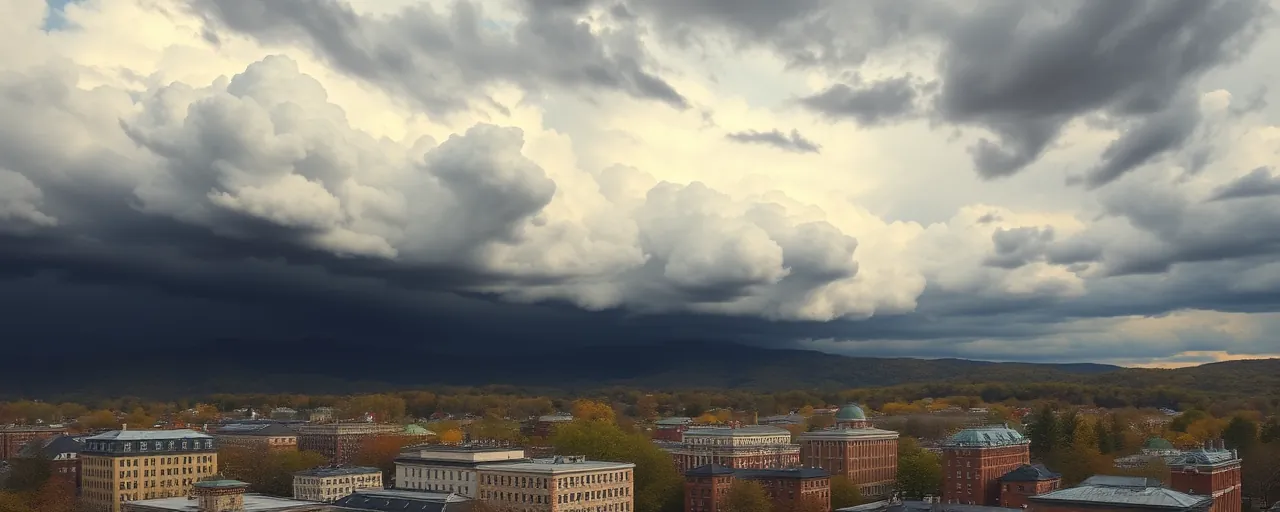Another Big Government Boondoggle Lands in Saratoga Springs
Governor Kathy Hochul rolled out the red carpet in Saratoga Springs today, heralding the start of construction at Springs West Apartments as a victory for working families. A shiny new 98-unit affordable housing project, complete with playgrounds and energy-efficient bells and whistles, promises to transform Allen Drive into a beacon of opportunity. At a cool $43 million, it’s the latest jewel in Hochul’s $25 billion housing crown, a five-year plan to churn out or preserve 100,000 affordable homes across New York. The fanfare was loud, the photo ops plentiful, and the praise from local officials effusive. But let’s cut through the noise: this isn’t a triumph of compassion; it’s a taxpayer-funded mirage dressed up as progress.
Saratoga Springs, a gem of a city known for its horse racing and tourism, doesn’t need Albany’s heavy hand to thrive. Yet here we are, watching the state pour millions into a project that sounds noble but smells like overreach. Hochul’s team boasts of nearly 6,000 affordable homes financed in the Capital Region over the past five years, with Springs West as the latest proof of their commitment. Commitment to what, exactly? To bloating budgets, entangling private markets in red tape, and slapping a government stamp on a problem better solved by free enterprise? The real story isn’t the ribbon-cutting; it’s the bill taxpayers are footing.
The Numbers Don’t Lie, But They Do Sting
Dig into the financials, and the picture gets uglier. Springs West leans heavily on New York State Homes and Community Renewal, raking in $21.8 million from federal and state tax credits, $20.8 million in tax-exempt bonds, and a $10.9 million subsidy from the Housing Finance Agency’s coffers. Add a $7.5 million mortgage from the State of New York Mortgage Agency, and you’ve got a project drowning in public funds. Sure, Key Bank and the Saratoga Springs Housing Authority chipped in, but the city itself sweetened the pot with a Payment in Lieu of Taxes deal, dodging property tax revenue that could’ve gone to schools or roads. This isn’t partnership; it’s a heist on the public dime.
Advocates for Springs West tout its 98 units, nearly half with two or three bedrooms, as a lifeline for households earning up to 80 percent of the area median income. Fair enough, housing costs are brutal, especially in a place like Saratoga where tourism drives up demand. But rewind to the 1970s, when New York’s housing woes took root amid fiscal collapse and federal retreat. Back then, the state learned hard lessons about overbuilding public projects that drained treasuries and left markets warped. Fast forward to today, and Hochul’s crew seems eager to repeat history, ignoring the private sector’s proven knack for delivering housing without bankrupting taxpayers.
Markets Work, Bureaucrats Don’t
Here’s the rub: government doesn’t build prosperity; it stifles it. Look at the University of Tennessee’s student housing deal with RISE Real Estate Co., a public-private partnership that delivered 1,950 beds in just 30 months. No endless tax credits, no bloated subsidies, just a lean collaboration that got the job done. Or take Alexandria, Virginia, where a $50.6 million project is bringing 373 affordable units online with private muscle flexing alongside public goals. These examples scream efficiency, something Springs West lacks with its labyrinth of funding streams and bureaucratic cheerleading. Saratoga’s workers need homes, not handouts orchestrated by Albany’s puppet masters.
Opponents might argue this project fights inflation by boosting housing supply, a point Senator Chuck Schumer hammered home with his chest-thumping over the Low-Income Housing Tax Credit. Nice try, but piling on public debt to prop up a few dozen apartments doesn’t tame prices; it distorts them. Historical data backs this up: the 1980s Housing Partnership in New York City leaned on private developers to churn out affordable units without today’s fiscal acrobatics. Springs West’s energy-efficient gimmicks, like LED lights and fancy insulation, might impress eco-warriors, but they jack up costs for dubious returns when private builders could deliver cheaper, faster, and just as livable.
A Better Way Forward for Saratoga
Saratoga Springs deserves better than a government that treats it like a pet project. The Chamber of Commerce gets it; President Todd Shimkus called workforce housing a priority for economic success. He’s right, but the solution isn’t Hochul’s $25 billion behemoth or her Pro-Housing Community Program, which dangles $650 million to bribe towns into compliance. It’s unleashing builders, cutting zoning nonsense, and letting the market breathe. The FY 2025 budget’s new 485-x tax law offers a flicker of hope with its 40-year exemptions for big projects, but it’s still a government carrot when a stick-free approach would do. Private developers, not Albany, hold the key to real affordability.
This isn’t about denying families a roof; it’s about who pays and how well it works. Springs West might house 98 households, but at what cost to the rest of us? The state’s track record, from the 1970s flop to today’s homelessness crisis, proves top-down fixes fail. Look at President Trump’s push for deregulation, a nod to letting markets solve what bureaucrats botch. Saratoga’s future hinges on growth, not gimmicks. Let’s ditch the tax-and-spend playbook and bet on the private sector to deliver homes that don’t break the bank, or our backs.
